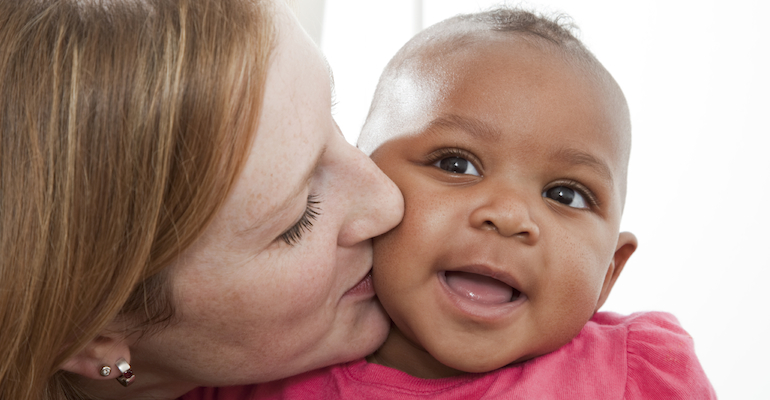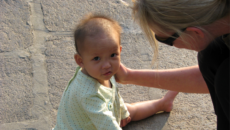Attachment and adoption seem inseparable to many parents. In fact, attachment is an ongoing process for all parents and children, one that generally takes from 10 to 14 months and continues to evolve over a child’s early years.
Attachment is rooted in a child’s need to be fed, bathed, kept warm, to sleep, in order to survive. As a parent meets these needs, attachment is formed. Consistency, predictability, and emotional responsiveness create secure attachment.
Consider that a baby requires more than 3,000 diaper changes and eats over 6,000 times during the first three years of life. Add 2,000 going-to-sleep times, 2,000 or so morning and naptime wake-ups, 1,000 bath times, and 2,000 getting dressed times. These are the moments (the glances up at mom or dad, being held when tired) to connect, establish trust, and strengthen your bond with your baby.
Making the Most of Everyday Moments
1. Always be there. Your baby needs to know with certainty that you will come when she needs you. A good rule of thumb: No matter what your child’s age at adoption, respond to his cries or call verbally or physically within 15 seconds.
2. Talk to your baby. Try to maintain eye contact. Make up games — peek-a-boo, I’m-gonna-get-your-belly-button.
3. If your child avoids eye contact, slowly coax the behavior over time (not forcing but not ignoring the behavior either). Play “I see you,” peeking, making eye contact, and then hiding again. Smile or laugh. Playful interactions decrease feelings of threat and make time with you fun and rewarding.
4. Touch your child. A pat on the arm, a kiss on the head, a tickle on the tummy: Connect through the spontaneous touches that occur throughout the day.
5. Keep it playful. Any moment can be fun with a song, a game, a laugh, or just a smile. The more a child associates positive feelings with being fed or changed or warmed or comforted by you, the stronger the developing parent-child relationship.
6. Do not take your baby’s behavior personally. Babies who are fussy eaters, who flail around during a diaper change, or pull away during your attempt to connect are usually tired or overwhelmed. Don’t interpret a baby’s withdrawal as a rejection of you or a desire to be with a previous caregiver. Stay close to him physically, as well as with your voice and your gaze.
7. Think like your child. Ask yourself, “What would this look like from my child’s point of view?” Don’t assume that your child is experiencing events as you do. Instead, consider his perspective. Go slowly; don’t push.
8. Demonstrate attachment. Behave as if your baby responded to you the way you expected. If he turns his head away when you pick him up, act as if he had looked at you, reached for you, and smiled. Walk into the room, looking right at him, with arms open, smile, and say lovingly, “There you are! I’ve been waiting for you. Look, my arms are ready to hold you.”
9. Maintain physical connection. Hold your baby, wear your baby, hand in hand, skin-to-skin. Soft baby carriers keep your infant close to your body. An older baby can adapt to a sling carrier. Keep toddlers close by holding hands or keeping your arm around them. Carry an older child to bed or in from the car. Give piggyback rides. Cuddle and rock.
10. You cannot spoil a baby! The more you respond, the more secure your child, and the more independent he will become later. Respond to a crying baby and the baby cries less over time. Respond to your child and you will see fewer behaviors designed to gain your attention. Your interactions will become richer and deeper.
Think of each time you care for your baby as an occasion to meet basic needs and to connect. By letting your baby know you are there to nurture her, by providing affection, happiness, and a sense of well-being, and by developing a relationship of give and take, you will establish a foundation for lifelong attachment with your child.



